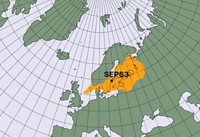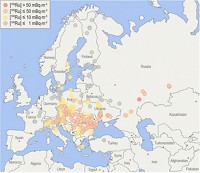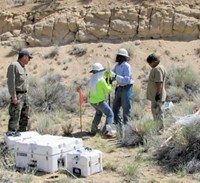Advertisement
Grab your lab coat. Let's get started
Welcome!
Welcome!
Create an account below to get 6 C&EN articles per month, receive newsletters and more - all free.
It seems this is your first time logging in online. Please enter the following information to continue.
As an ACS member you automatically get access to this site. All we need is few more details to create your reading experience.
Not you? Sign in with a different account.
Not you? Sign in with a different account.
ERROR 1
ERROR 1
ERROR 2
ERROR 2
ERROR 2
ERROR 2
ERROR 2
Password and Confirm password must match.
If you have an ACS member number, please enter it here so we can link this account to your membership. (optional)
ERROR 2
ACS values your privacy. By submitting your information, you are gaining access to C&EN and subscribing to our weekly newsletter. We use the information you provide to make your reading experience better, and we will never sell your data to third party members.
Atmospheric Chemistry
Reconstructing the source of radioactive ruthenium in Europe in 2017
Atmospheric modeling suggests that a Russian plant that processes spent nuclear fuel was the source of the cloud
by Laura Howes
December 1, 2019
| A version of this story appeared in
Volume 97, Issue 47

In fall 2017, monitoring sites across Europe began to detect radioactive ruthenium-106 in the air. Analyses of the plume’s movement and its chemical makeup conducted since that time independently indicate that the leak came from the Mayak nuclear reprocessing facility in Russia. Russian authorities have refuted these findings. To more accurately pinpoint the origin of the plume, Olivier Saunier of the French Institute for Radiological Protection and Nuclear Safety (IRSN) and colleagues combined environmental measurements and atmospheric modeling (Proc. Natl. Acad. Sci.U.S.A. 2019, DOI: 10.1073/pnas.1907823116). The researchers found that a 250 TBq release of ruthenium-106 from the Mayak facility in the Ural Mountains on Sept. 28, 2017, best fits the data. Rosatom, the firm that runs the Mayak plant, has previously maintained that there have been no reportable events at any of its facilities during the period discussed. The firm also pointed out that an inspection of the Mayak facility after the 2017 measurements found no traces of an accident. C&EN asked Rosatom for a response to these new findings but did not receive a reply by the time this article went to press.





Join the conversation
Contact the reporter
Submit a Letter to the Editor for publication
Engage with us on Twitter